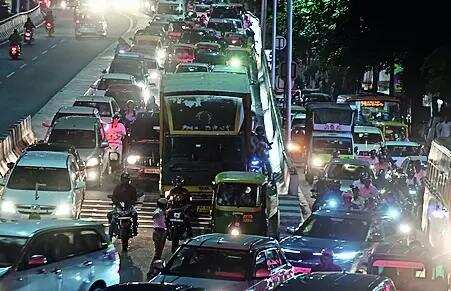
If you find yourself more stationary on city roads than in motion, especially during peak hours, then you are not alone. Since 2015, there has been a 46% rise in registration of private vehicles with the regional transport offices in the city. In contrast, the rise in public transport vehicles has been 11%.
According to a survey carried out by the students of CEPT University, only 3.6% of the people surveyed extensively use public transport. The share of two-wheeler owners was 46% whereas 14.5% owned cars or SUVs. The figures came to light after groups of students at the faculty of planning in Cept University chose various topics related to the city’s civic issues for in-depth studies. Two groups under tutor Nikita Bhakuni undertook the analysis of the city commute. Average trip length: 7.6km
The findings indicate that the average trip length for Amdavadis is 7.6km. While a salaried person on average travelled 11km per day, the trip was relatively shorter for self-employed persons at 7km. “We came across an interesting finding where 8km emerged as a magic number. If the trip is shorter than 8km, the person would opt for private mode of transport. He would either use his own vehicle or hire a rickshaw or even walk down. But if the distance is more than 8km, chances of choosing public transport are much higher,” said a faculty member.
The experts also pointed at the polycentric nature of the city where there are 25-odd clusters that see the highest movement of traffic – both through public and private vehicles. Some of these hubs include SG Road, Bopal, Navrangpura, Prahladnagar, Navrangpura, Paldi and Ashram Road in western city parts.
The study did not write off public transport completely but pointed at just 3.6% of its share in total commute, which is less compared to several major Indian cities.
“The study indicates households with annual income of Rs 12 lakh or more often have both two-and four-wheelers. The city has failed to provide impetus to public transport due to factors such as network and connectivity, travel pattern and service quality,” said a tutor.
“Public transport for the same distance covered by private transport is often 4.5 times cheaper. But long wait time and lack of last-mile connectivity deter citizens from using buses and trains.”

